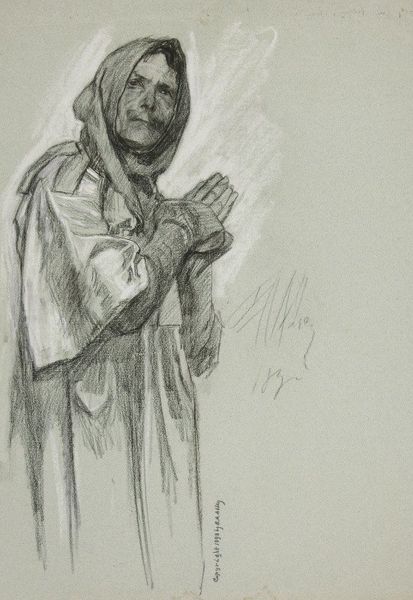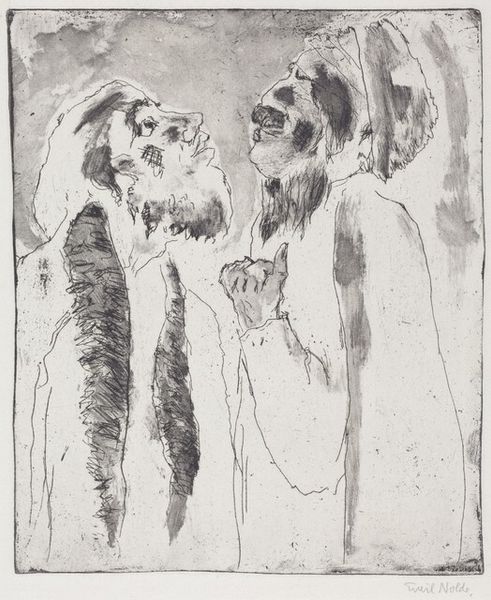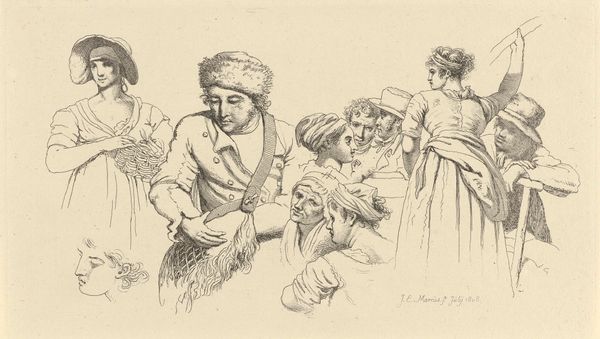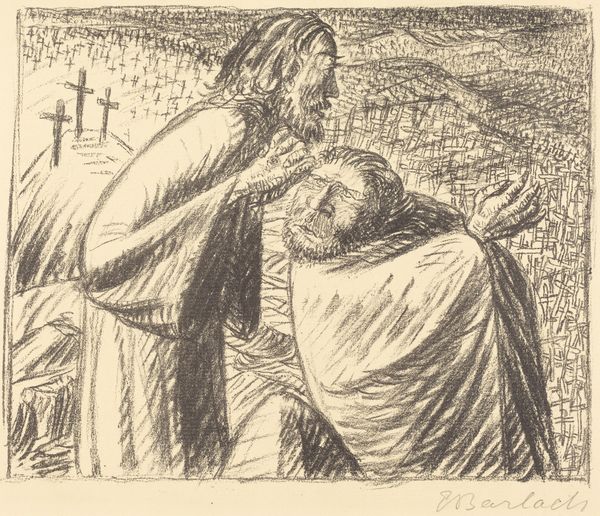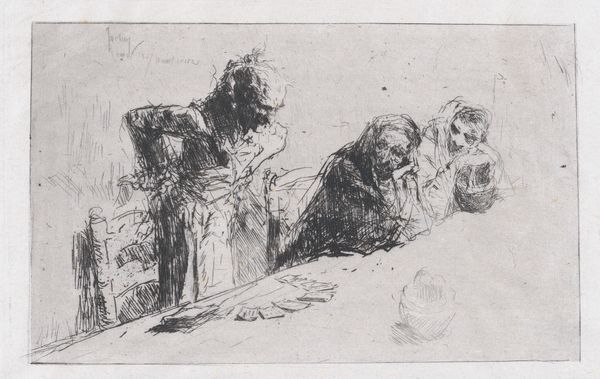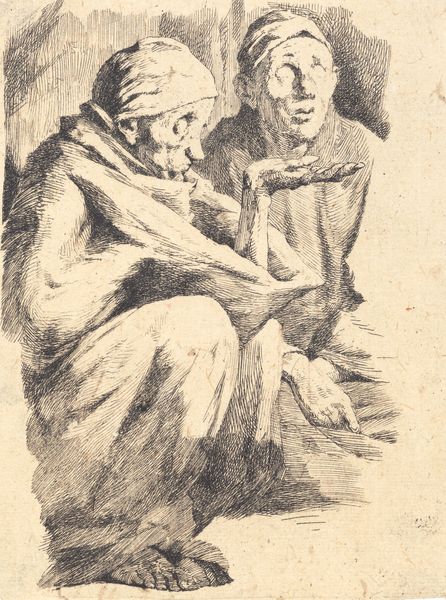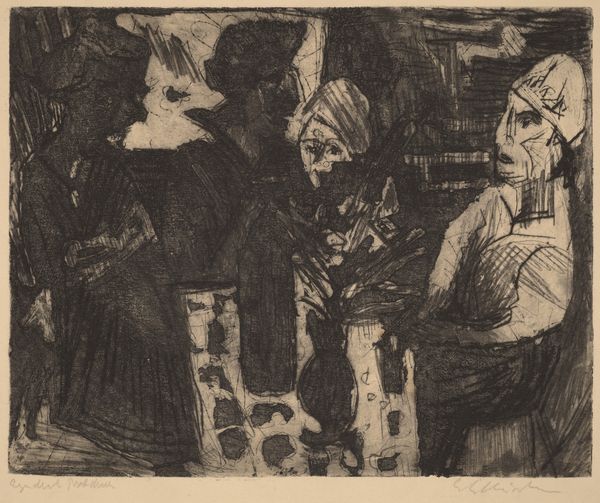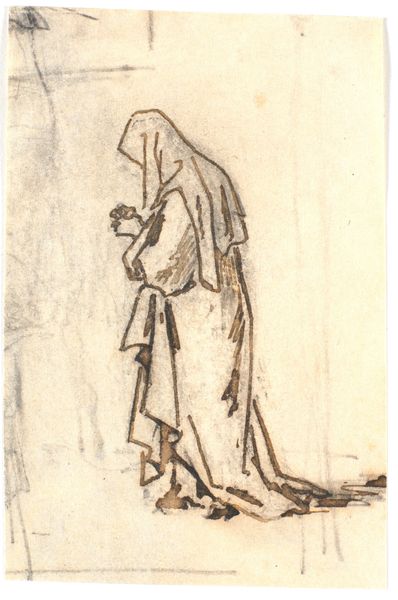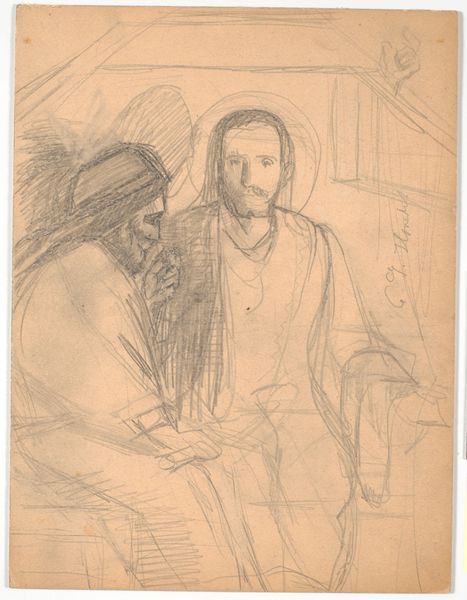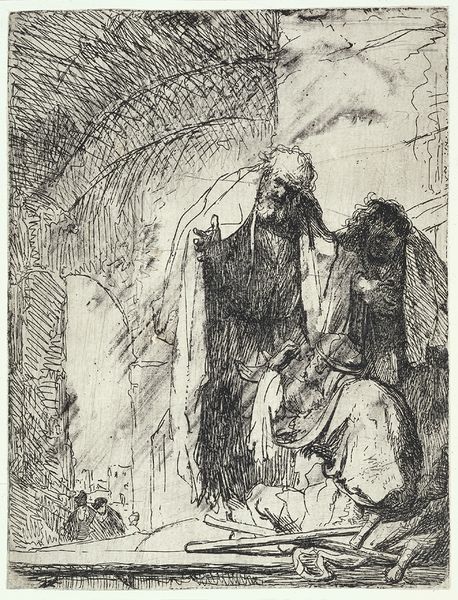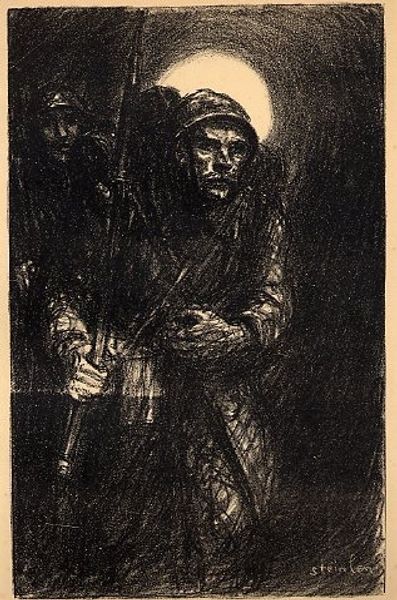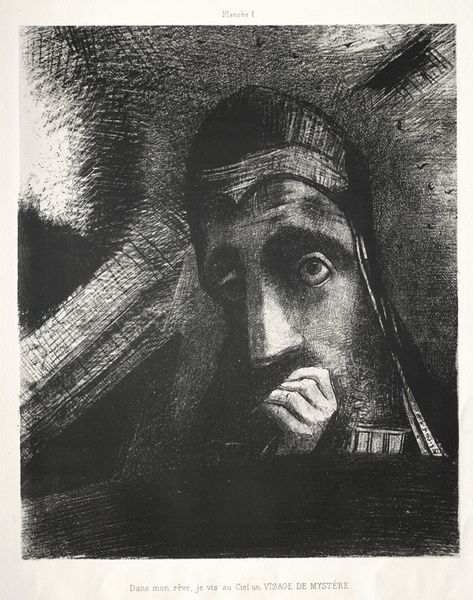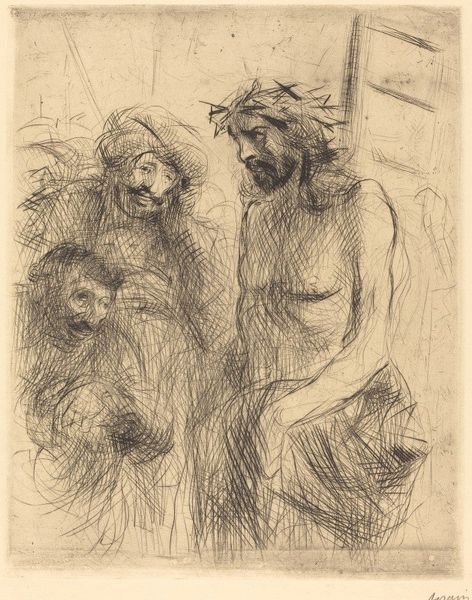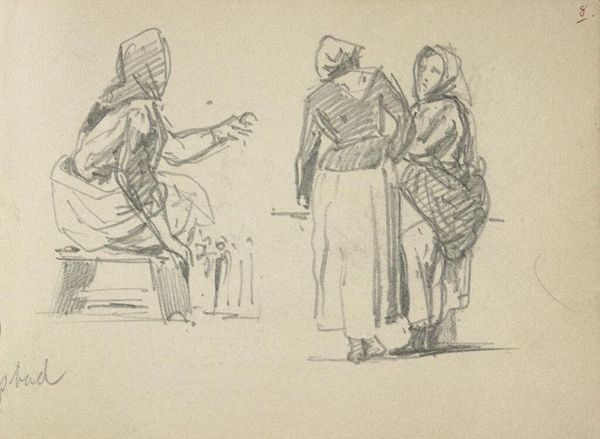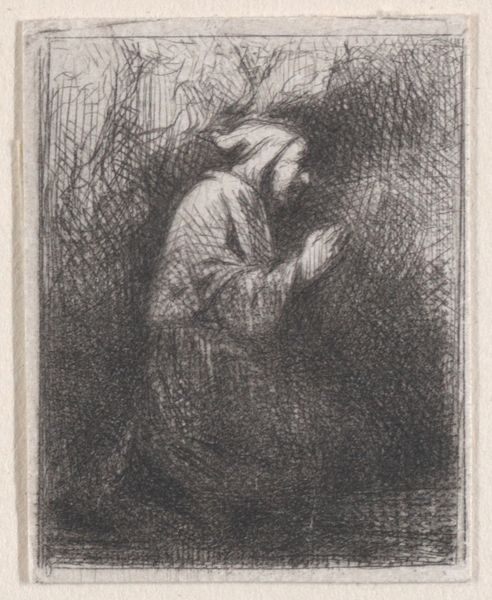
drawing, print, ink, engraving
#
portrait
#
drawing
#
16_19th-century
# print
#
figuration
#
ink
#
orientalism
#
engraving
Dimensions: 71 mm (height) x 114 mm (width) (plademaal)
Curator: Welcome. Here we have "Prøveplade med orientalere," or "Study Sheet with Orientals," a print made with engraving and ink on paper by Frans Schwartz in 1897. Editor: It has a somewhat melancholic feel. The monochrome, the heavy shading, even the slightly abraded quality of the print – it suggests a weariness. Curator: Indeed. As an iconographer, I’m immediately struck by the deliberate contrast. The figures in the left panel are distinct and poised, holding small, spherical objects, contrasting against the chaos of layered strokes used in the second panel where it appears like figures swathed and bundled with dense hatching marks alluding to possible hardship or destitution. Editor: Right. Considering the work's creation date and Schwartz's background, we should address Orientalism, the Western representation of the "Orient." The depiction can easily exoticize and misrepresent, furthering existing power imbalances and colonial narratives. How does this imagery perpetuate certain assumptions about those represented, particularly if considered in the socio-political climate of the late 19th century? Curator: An important consideration. I view such art through the lens of historical image-making; the repeating visual tropes tell us as much about European perceptions of the 'Orient' as they do about those pictured. These repeating shapes can act like cultural echoes. I do note, the details provided, such as their costumes, seem carefully and respectfully rendered. It leads me to consider whether this may have been done out of genuine artistic curiosity rather than a desire to enforce superiority? Or maybe this is part of its symbolism? Editor: Even with possible well-intentions, the power dynamics need critical interrogation. Considering Edward Said’s theories, this work necessitates thoughtful deconstruction and questions such as who gets to dictate which cultures or individuals have any level of agency in their representations. I think it’s impossible not to consider such representations without a certain ethical stance, regardless of intention, wouldn’t you agree? Curator: Ultimately, a reading depends on layers of contextual analysis. For me, though, the power resides not just in intention but in the enduring symbolic power of certain visual shorthands over decades, or even centuries. These symbolic meanings of the oriental themes still carry powerful meanings that influence societies today. Editor: Absolutely. Hopefully, by discussing them, we can at least become more attuned to how these images perpetuate power.
Comments
No comments
Be the first to comment and join the conversation on the ultimate creative platform.
